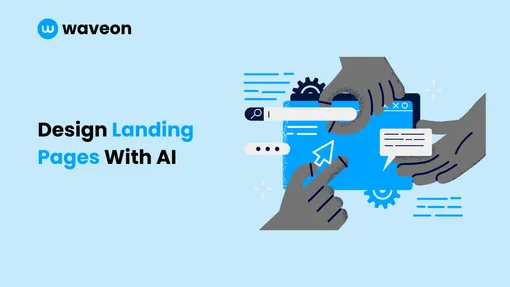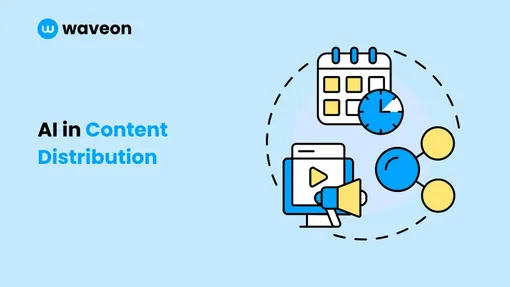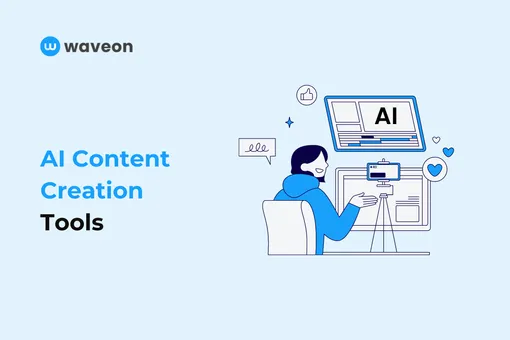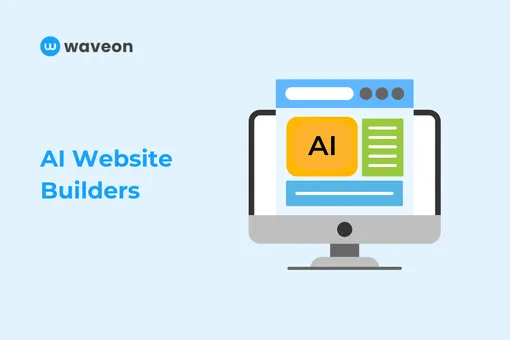Marketing
B2B Marketing Automation Guide in 2024 [Strategies, Tools & Examples]
Ekta Swarnkar
10/17/2023
0 min read
TABLE OF CONTENTS

With acquisition costs increasing rapidly, retaining customers is the only way to build a long-term growing business. And personalized customer experience is the solution to retention.
But is it possible to personalize marketing at scale? If yes, how?
The answer is marketing automation.
Large-sized companies succeed because of automation. They employ thousands of employees and retain millions of customers but can still function well because they’ve built systems that do the work.
So, can small to mid-sized businesses also leverage B2B marketing automation to streamline their operations?
Yes, they can. How? That’s what you’ll learn in this ultimate guide, including what B2B marketing automation is, why it’s important, and how to use it to grow your business.
What is B2B marketing automation?
When the term “marketing automation” was first introduced, it meant leveraging technology to automate repetitive marketing tasks at scale to improve productivity and efficiency.
While the definition is still true today, marketing automation has become so much more. It’s about combining technology, artificial intelligence, and audience data to align marketing and sales with people’s needs.

By using marketing automation, you can improve marketing campaigns, make sales calls more resonating, automate some repetitive tasks, and get better outcomes.
Some of the B2B marketing automation examples are:
Audience profiling and prospecting by collecting data
Audience segmentation for personalized targeting
Automating email nurturing sequences
Sending web push notifications
Components of marketing automation
B2B marketing automation is a vast topic and covers everything from the beginning of a customer journey to the end. Some of the components of marketing automation are:
Lead profiling and segmentation
Email marketing automation
Customer relationship management
Social media automation
Lead capturing landing pages
Analytics and tracking
So, talking about marketing automation in general won’t be effective as we can’t cover many things in one guide. That’s why we'll focus on email marketing automation only.
How does marketing automation work in B2B?
A B2B buyer’s journey differs a lot from a B2C buyer’s journey for many reasons:
The cost of purchase is generally high
The B2B buyer (manager) is purchasing on behalf of a company for different end-users (team members)
There are generally six to ten decision-makers involved in the buying process
 Since the buyer is purchasing a significantly costly product on behalf of a company for a different end user, they have to make the right choice and get everyone’s approval before finalizing the purchase. In short, they’re more picky.
Since the buyer is purchasing a significantly costly product on behalf of a company for a different end user, they have to make the right choice and get everyone’s approval before finalizing the purchase. In short, they’re more picky.
To sell to this buyer, a business needs to address all the doubts the buyer has as well as consider the pain points, needs, and wants of end users and decision-makers.
By leveraging marketing automation, B2B companies collect audience data (buyer, decision-maker, and end-user,) analyze their behavior to give insights into what’s critical for each user, and create personalized marketing messages for each type.
According to Databox, the average length of a B2B sales cycle is 1 to 3 months, so of course, one marketing message won’t cut it.

From consistently collecting audience data to understanding their needs to giving insights to create personalized marketing messages in different stages of a B2B sales cycle, marketing automation helps you optimize the entire buyer journey.
It helps buyers make informed decisions about the purchase and your business to build an expert brand they can confidently recommend in their network.
Benefits of marketing automation for small and mid-sized companies
Adobe released the State of Marketing Automation 2023, which revealed that 98% of marketers say marketing automation is critical to success.

If you still think marketing automation is not for you, I’ll ensure you’re certain after this section. Let me show you how with these specific benefits:
Personalization at scale
90% of marketers believe that personalization helps in a company’s profitability, but many aren’t able to personalize marketing at scale. Why? Because 65% of B2B buyers feel their needs aren’t met.

One thing is clear: Personalization is the future of marketing. So, how do companies personalize marketing at scale?
By leveraging marketing automation in B2B, companies can collect audience data, understand behavior and buying patterns, segment audiences into different pools, and personalize marketing specific to each group.
Increased efficiency and productivity
The reason why marketing automation started was to increase productivity, and it has helped incredibly so far. According to research by Invesp, automation derives a 14.2% increase in sales productivity and a 12.2% decrease in marketing overhead!

By automating repetitive manual tasks, employees can focus on more productive tasks.
By automating tedious tasks, businesses lessen the scope for human error.
Streamlined multi-platform integration
The biggest use case of automation in productivity is streamlining the integration process to make it easier to access data faster.
Using different tools is unavoidable, but extracting insights from multiple platforms is challenging. Analytics automation software simplifies this problem by integrating multiple tools and gathering insights in one dashboard so marketing teams can view everything in one place and make logical decisions.
Data-based optimization to increase leads
Automation is based on gathering audience data based on their activity, and campaigns created after analyzing audience data are more targeted and resonate with an audience group — more likely to perform better.
The same research by Invesp concluded that 80% of marketing automation users saw an increase in the number of leads, and 77% saw an increase in conversion.
Increased customer lifetime value
To analyze the audience buying behavior, HelpLama conducted a survey and found that 80% of customers trust brands that share content while keeping them in mind. Trust plays a major role in people’s buying decisions, but trust also helps keep them longer.
Marketing automation helps you with personalization, and it also helps you crack the right timing. When you send the right message to the right people at the right time, people resonate better and trust your brand more.
Maximized ROI
Finally, the ROI generated by marketing automation is $5.44 per dollar spent. By keeping marketing targeted and personalized, you save time and resources while generating more leads and conversions, thanks to marketing automation.
Effective B2B marketing automation strategies that work today
I’m sure you don’t need any more reasons as to why you should invest in automation. By now, you would want to learn how to leverage it to your advantage.
Let’s look at some of the effective B2B automation strategies at different stages specific to email marketing:
1. Lead scoring
Not all your email subscribers will be at the same buyer journey stage. Some will be more engaged, some less, and some won’t even open your emails — so should you send the same email to everyone?
No. You should:
Send promotional emails to engaged subscribers to convert them into customers
Send nurture emails to less engaged subscribers to turn them into engaged subscribers
Analyze unengaged subscribers’ behavior to re engage them
But how do you categorize subscribers into different pools? By lead scoring. Using automation, you’ll collect data to analyze their engagement level. Each subscriber gets a lead score based on their engagement level. For example:
+20 points for clicking the link (or CTA) in an email
+10 for opening the email
–10 for not opening three consecutive emails
–20 for unsubscribing
Based on each subscriber’s lead score, you’ll separate them into different pools and send relevant emails.
2. Subscriber profiling
The data you collect about your subscribers will never be enough, but you can’t spend all your time collecting audience data. That’s when automation can help you collect each subscriber’s data using various methods, including:
Analyzing their online profiles to segment them into different pools based on their demographics,
Figuring out critical interests based on the pages a visitor browsed mostly before becoming a subscriber,
Finding pain points based on the links they clicked on email campaigns,
Analyzing the content they shared on social media profiles, communities, or blogs.
Using this information, you can create detailed customer profiles. Use filters and labels many email marketing automation software provide and customize emails that say things they’re interested in listening to.
3. Lead nurturing
After lead scoring, subscriber profiling, and segmenting, you can also use automation to nurture them and build trust. Smart brands send automated nurture emails to new subscribers who are not customers yet but will be in the future.
For example, free Semrush users get marketing newsletters once every week:
And Semrush regularly sends educational emails to increase touchpoints with subscribers and keep them engaged with the brand.
4. Customer onboarding
Onboarding new customers is key to providing an incredible user experience and retaining them longer. It’s crucial to have a seamless onboarding experience. If not, customers (74%) move to another platform.
Email automation platform helps you onboard customers effortlessly in two ways:
1. By sending onboarding email sequences to new customers
New customers don’t know about most features of a SaaS product and need the company’s help to set up the systems. Sending onboarding emails to guide them is one of the best ways to help them set up things themselves.
For example, after signing up for SE Ranking, I received a welcome email guiding me on setting up my dashboard.
2. Sending product tutorials to educate customers
Customers often don’t know a product feature exists and choose another software. It’s your job to educate customers about the different features of your product and how to use them to retain them longer. You can also automate product tutorials, just like Grammarly does for every new feature/product launch:
Or prompt subscribers to click on the CTA and access the feature directly on the dashboard like Trello does:
5. Upselling
Automation also helps in upselling add-on products, services, or bigger plans to customers. You can leverage automation to track customer behavior on your product to extract insights. For example, if customers run out of their daily credits, they clearly need a bigger plan.
Or, if you’re introducing a new product/feature, you can use email automation to send the launch email to different subscribers at the right time when they’re most prompted to try it. For example, ActiveCampaign sent this email to launch its AI:
To take things one step further after the launch, you can create an eight to ten automated email series to keep sending specific use cases of your feature launch to tell your customers why it’s helpful for them.
Other than email marketing, automation is also used in other marketing activities:
6. Social media automation
Combining social media marketing and automation is an effective way to build a loyal audience base and extract customer insights.
For example, you can batch-create and automate content at scale using social media automation software like Buffer for different social media platforms to nurture your audience, such as About.com increasing their website traffic using social media automation.
You can use targeted ads, surveys, forms, and quizzes to collect data from your audience for marketing campaigns.
7. Chatbots
Chatbots are fantastic automation tools that help you collect accurate customer data by interacting with the first person. You can learn a lot about their pain points by adding simple chatbots on the website that answer visitors' questions.
Another way to use a chatbot is to combine it with your company documentation so it immediately answers any questions and improves customer satisfaction.
8. Action-based triggers
Automation can also be used to extract information based on actions users take. Some examples are:
Abandoned cart emails and messages automatically remind buyers to complete their purchase.
Visitor behavior on a website, like page sessions, clicks, time spent, etc.
Automated popups to prompt visitors to subscribe to an email list.
Analytics automation software to track paid ads performance, website traffic activity, and sales journey in one dashboard.
Five best B2B marketing automation tools
Now that you know the fantastic benefits of automation, it’s time to start picking the right tools to add to your arsenal.
1. HubSpot — CRM automation software

HubSpot is a free CRM (customer relationship management) platform that automates all parts of your business involving customers, from prospecting leads to onboarding new customers.
Using HubSpot CRM, you can:
Automate lead prospecting to identify leads most likely to convert.
Automate lead nurturing using drip email campaigns to send the right messages.
Analyze sales activity in real time and score leads.
Check out HubSpot free CRM here >>
2. MailChimp — email automation software

MailChimp is an email marketing automation software that provides you with all the automation tools to add subscribers to an email list and convert them into customers.
Some of the things you can do with MailChimp are:
Segmentation: Divide email subscribers into different groups.
Automation: Use drip email sequences to drive more traffic and boost engagement.
Analytics: Improve conversion rates by learning from data.
Check out MailChimp pricing plans here >>
3. Buffer — social media automation software

Buffer is a social media automation platform that allows you to increase your social media click rates by sharing click-worthy content and automating the scheduling process.
You can use Buffer to:
Leverage Buffer AI assistant to generate content ideas, repurpose posts, and write social media post copies.
Review automated analytics reports to understand audience behavior.
Schedule batches of content at once across different social media platforms.
Learn about Buffer pricing here >>
4. EngageBay — marketing automation software for small businesses

EngageBay is an all-in-one marketing automation software for small businesses, giving them features like email marketing, sales automation, customer management, and more.
Some of the things you can do with EngageBay are:
Create automated email sequences to send on autopilot.
Automate sales process from prospecting to onboarding new customers.
Helpdesk software to solve customer queries.
Check out EngageBay pricing here >>
5. Customer.io — customer engagement automation software

Customer.io is a customer engagement automation software for businesses to create data-driven marketing messages that reach audiences at the right time.
Customer.io allows you to do these things:
Create messages for an entire customer journey in one dashboard.
Integrate different platforms to collect customer data from different sources.
Re-engage with customers using drip campaigns.
Learn about Customer.io pricing here >>
How to choose the right marketing automation platform for your business?
Choosing the correct automation tools for your business is equally important to ensure they’re helping you derive the results you expected. Here are the things to look for while choosing an automation platform:
Lead management: It should give options to segment leads, add filters and tags for additional details, score leads, etc.
Workflow automation: The platform should give you an overview of the entire workflow.
A/B testing: Look for a platform that allows you to split tests to improve campaigns.
Personalization: Look for an option to personalize your messages for different audience pools.
Customer support: Your tool should provide 24*7 customer support in different options like email, chat, and call.
Ease of use: The platform should be beginner-friendly.
Analytics: It should provide simplified analytics to collect insights.
Invest in a B2B marketing automation strategy to improve your marketing efforts
Your B2B marketing automation strategy will be individual to your business based on your target audience and the channels you want to focus on — so it’s crucial to lay down the goals and expectations first.
Create a strategy considering every detail of your target audience because the more customer data you have, the better insights you get, and the more targeted your marketing campaigns will be.













